Perhaps in your household the children make up cards of their own. Laura Robinson, a nationally
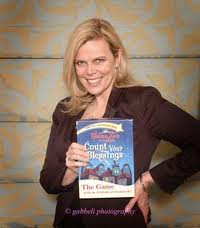
Laura Robinson, a additionally acclaimed stamping teacher will be in Burlington in the Discovery Room of the Joseph Brant Museum
acclaimed stamping expert will be at the Discovery Room of the Joseph Brant Museum for a two hour stamping class that will have you creating six designer quality holiday cards while learning how easy and fun rubber-stamping is. Bring tradition back into the holidays and give something handmade for those close to you. Everything is supplied, all you need to bring is your sense of humour and holiday spirit DECEMBER 9TH – 1pm – 3:30 pm
There is a fee of $25which includes all the material you will need to make six special cards. Refreshments will be served and a tour of the museum will be included. PRE-REGISTRATION REQUIRED. CALL (905) 332-9888 or 634-3556
The first Christmas cards were illustrated by John Callcott Horsley in London on the 1st of May 1843. The picture, of a family with a small child drinking wine together, proved controversial, but the idea was shrewd. Two batches totaling 2,050 cards were printed and sold that year for a shilling each and an industry was born.
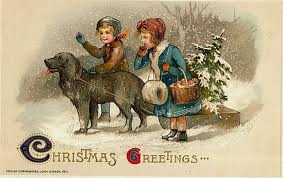
Children and evergreen trees were often the focus of a card. Some of these became collector’s items.
Early English cards rarely showed winter or religious themes, instead favoring flowers, fairies and other fanciful designs that reminded the recipient of the approach of spring. Humorous and sentimental images of children and animals were popular, as were increasingly elaborate shapes, decorations and materials. In 1875 Louis Prang became the first printer to offer cards in America, though the popularity of his cards led to cheap imitations that eventually drove him from the market. The advent of the postcard spelled the end for elaborate Victorian-style cards, but by the 1920s, cards with envelopes had returned.
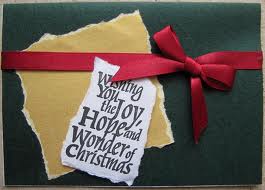
An example of a more complex stamped card – the possibilities for a message that is uniquely you, are close to endless.
The production of Christmas cards was, throughout the 20th century, a profitable business for many stationery manufacturers, with the design of cards continually evolving with changing tastes and printing techniques. The World Wars brought cards with patriotic themes. Idiosyncratic “studio cards” with cartoon illustrations and sometimes risqué humor caught on in the 1950s.
Nostalgic, sentimental, and religious images have continued in popularity, and, in the 21st century, reproductions of Victorian and Edwardian cards are easy to obtain.
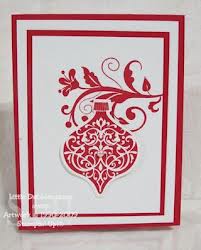
Stamped cards can be simple, complex and very detailed. You get to use your imagination and send the Christmas message you want to send.
The estimated number of cards received by American households dropped from 29 in 1987 to 20 in 2004. Despite the decline, 1.9 billion cards were sent in the U.S. in 2005 alone. In the UK, Christmas cards account for almost half of the volume of greeting card sales, with over 668.9 million Christmas cards sold in the 2008 festive period.
“Official” Christmas cards began with Queen Victoria in the 1840s. The British royal family’s cards are generally portraits reflecting significant personal events of the year. In 1953, U.S. President Dwight D. Eisenhower issued the first official White House card. The cards usually depict White House scenes as rendered by prominent American artists. The number of recipients has snowballed over the decades, from just 2,000 in 1961 to 1.4 million in 2005.
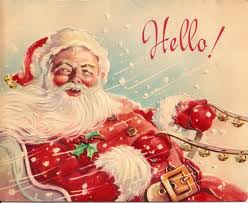
Santa hasn’t always been a part of Christmas cards but when he was the pictures were often bright and cheerful – but not always.
Christmas cards have been avidly collected. Queen Mary amassed a large collection that is now housed in the British Museum. The University College of London’s Slade School of Fine Art houses a collection of handmade Christmas Cards from alumni such as Paula Rego and Richard Hamilton and are displayed at events over the Christmas season, when members of the public can make their own Christmas cards in the Strang Print Room.
Specimens from the “golden age” of printing (1840s–1890s) are especially prized and bring in large sums at auctions. In December 2005, one of Horsley’s original cards sold for nearly £9,000. Collectors may focus on particular images like Santa Claus, poets, or printing techniques.
The Christmas card that holds the world record as the most expensive ever sold was a card produced in 1843 by J. C. Horsley and commissioned by civil servant Sir Henry Cole. The card, one of the world’s first, was sold in 2001 by UK auctioneers Henry Aldridge to an anonymous bidder for a record breaking £22,250.
And that is far more than you ever wanted to know about Christmas cards. If you want to enjoy an afternoon learning a new craft – try this event.















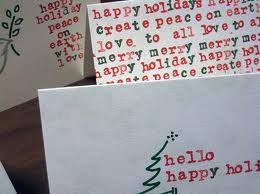

Interesting!! Of course the internet has both decimated and enhanced the Christmas card tradition. Decimated, because people send Christmas cards (with audio!) over the net, and enhanced because the options are limitless … Still, as you point out, there is NOTHING like a genuine card from an old friend or distant family member. Not only is it tangible & memorable as a ‘keepsake’, but it warms the heart in a way that a ‘passing click’ never can.